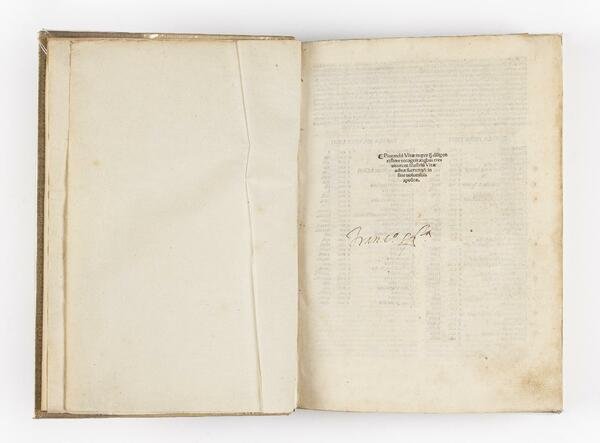
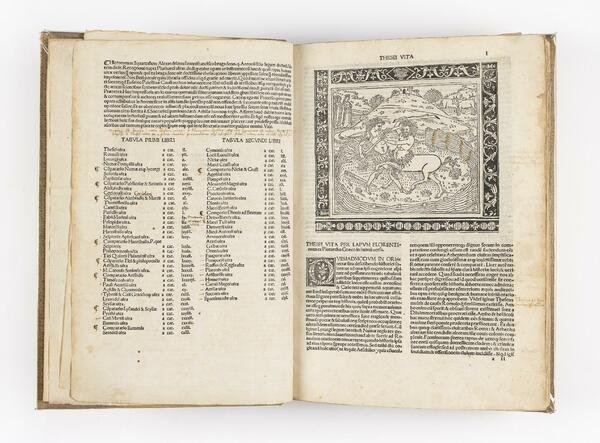
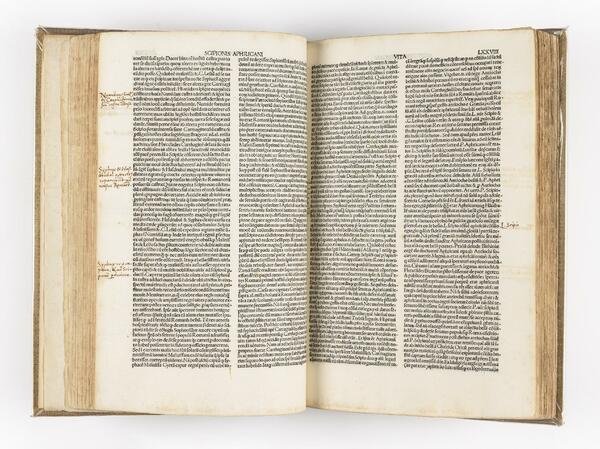
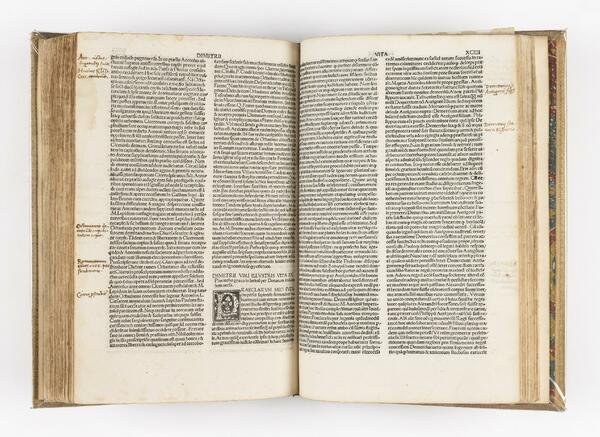
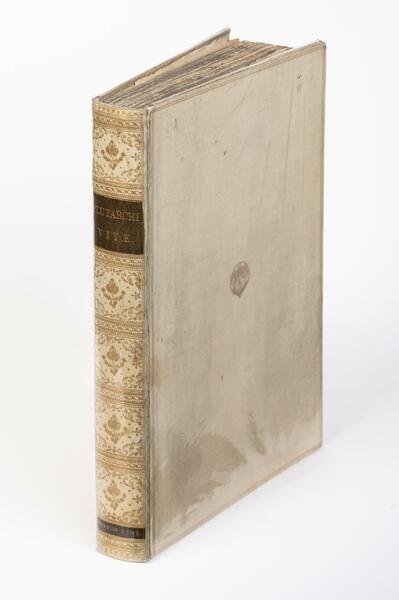
Livres anciens et modernes
Plutarchus (Ca. 46-120)
Plutarchi Vitae: nuper quam diligentissime recognitae: quibus tres virorum illustrium vitae aditae fuerunt: and in fine voluminis apositae
Donnino Pinzi, 1502
pas disponible
Govi Libreria Antiquaria (Modena, Italie)
Demander plus d'informationsLes frais d'expédition corrects sont calculés une fois que l'adresse de livraison a été indiquée lors de la création de la commande. Un ou plusieurs modes de livraison sont disponibles à la discrétion du vendeur : standard, express, economy, in store pick-up.
Conditions d'expédition de la Librairie:
Pour les articles dont le prix est supérieur à 300 euros, il est possible de demander un plan de paiement échelonné à Maremagnum. Le paiement peut être effectué avec Carta del Docente, Carta della cultura giovani e del merito, Public Administration.
Les délais de livraison sont estimés en fonction du temps d'expédition de la librairie et de la livraison par le transporteur. En cas de retenue douanière, des retards de livraison peuvent survenir. Les frais de douane éventuels sont à la charge du destinataire.
Pour plus d'informationsMode de Paiement
- PayPal
- Carte bancaire
- Virement bancaire
-
-
Découvrez comment utiliser
votre Carta del Docente -
Découvrez comment utiliser
votre Carta della cultura giovani e del merito
Détails
Description
Due parti in un volume in folio (mm. 310x205). Cc. [1], CXLV; CLI. Segnatura: a-r8 s10; A-T8. Manca l'ultima carta bianca T8. Grande figura in legno a mezza pagina a c. a2r entro bordura su fondo nero. Iniziali xilografiche. Pergamena rigida dell'Ottocento, dorso riccamente decorato in oro con duplice tassello con titolo, luogo e data di stampa impressi in oro, piatti con al centro le armi dorate del barone John Benjamin Heath (1790-1879) entro duplice filetto sempre in oro, risguardi in carta marmorizzata (cerniera anteriore parzialmente fessurata). Al contropiatto ex-libris inciso di Sir John Leslie Bar[one]t Glaslough House (1822-1916). Al titolo firma di appartenenza posteriore. Quattro piccoli fori tondi di tarlo all'inizio del volume, leggero alone marginale alla fine del volume, qualche macchia o fioritura sporadica, ma ottima copia fresca e genuina, profusamente annotata nei margini da una o più mani coeve (le note non sono state intaccate dal legatore e sono perfettamente integre).
Provenienza. "John Benjamin Heath was the son of John Heath, merchant of Genoa, and a grandson of Benjamin Heath the great book collector. He was educated at Harrow School, where he is said to have fagged for Lord Byron. A merchant and foreign banker in London, he also served as Consul General for the Kingdom of Sardinia 1817 1861, and for the Kingdom of Italy 1861 1879. He was Director of the Bank of England 1823 1872, Deputy Governor 1843 1844, Governor 1846 1847, and Master of the Grocer's Company. He was created Baron Heath of the Kingdom of Italy 26 May 1867. He was elected a Fellow of the Society of Antiquaries in 1832, and a Fellow of the Royal Society in 1843. His collection of autographs was sold by Sotheby, Wilkinson e Hodge, 24 April 1879, and part of the family library in the sale of part of the library of Amédee John Heath, Baron Heath by Sotheby, Wilkinson e Hodge 7 November 1892" (University of Toronto Libraries, British Armorial Bindings).
Pregevole edizione edita per le cure di Girolamo Squarciafico, come appare sul verso del frontespizio. Il grande legno che raffigura Teseo mentre combatte contro il Minotauro era già apparso nell'edizione del 1491 e nuovamente anche in quella del '96. Attribuito da Rava all'artista della Bibbia Malermi, secondo F. Lippmann richiamerebbe anche in un certo qual modo l'opera grafica del Pollaiolo: "In the Plutarch, a very fine woodcut occupies about half of the space within the border-frame work. This exhibits a picture of the combat between Theseus and the Minotaur, admirably designed and executed. It is quite in the manner of the unknown artist who designed the vignettes of the Malermi Bibles, and it is evidently in his hand. Indeed, it ranks among the best of his productions. The attitudes of the two combatants, and the conception of the subject, remind us to some extent of the work of Antonio Pollaiolo, in his known copper-engravings" (p. 96).
Sander, 5784; Essling, 596; Rava, p. 12; Edit 16, CNCE34849.

